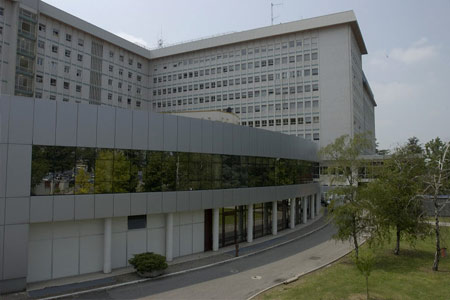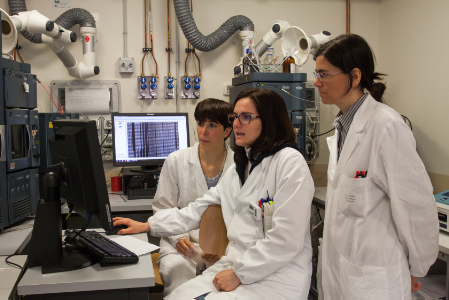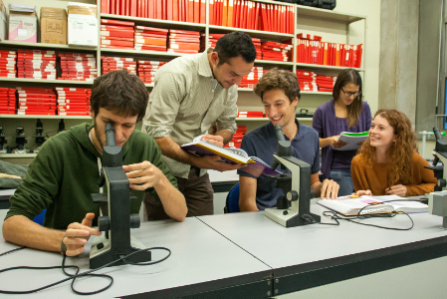- Autori:
-
Parisi, Vanda; Ditaranto, Raffaello; Taglieri, Nevio; Di Nicola, Federico; Baldassarre, Riccardo; Schiavo, Maria Alessandra; Nardi, Elena; Lillo, Rosa; Meucci, Maria Chiara; Cianci, Alessio; Re, Federica; Marchi, Giacomo; Monda, Emanuele; Capelli, Irene; Donadio, Vincenzo; Cappelli, Francesco; Salamon, Irene; Blanes, Juan-Ramón Gimeno; Girelli, Domenico; Pasquale, Ferdinando; Biffi, Mauro; Mignani, Renzo; Graziani, Francesca; Galiè, Nazzareno; Limongelli, Giuseppe; Olivotto, Iacopo; Biagini, Elena
- Titolo:
-
Electrocardiogram evolution in Anderson-Fabry disease patients during follow-up in relation to specific treatment and cardiac disease progression
- Anno:
-
2025
- Tipologia prodotto:
-
Articolo in Rivista
- Tipologia ANVUR:
- Articolo su rivista
- Lingua:
-
Inglese
- Referee:
-
No
- Nome rivista:
- International Journal of Cardiology
- ISSN Rivista:
- 0167-5273
- N° Volume:
-
431
- Intervallo pagine:
-
1-10
- Parole chiave:
-
Anderson-Fabry disease; Electrocardiogram (ECG); Evolution; Follow-up; Treatment status
- Breve descrizione dei contenuti:
- Aims: Electrocardiogram (ECG) analysis plays a central role in Anderson-Fabry disease (AFD) diagnosis and management. This study aimed to assess ECG evolution during follow-up in relation to specific treatment and disease progression. Methods: Retrospective study of a multicentric cohort of AFD patients with >= 2 ECG and echocardiographic data. Specific treatment status (enzyme replacement or chaperone) was defined as: chronic therapy (>= 1 year before the first ECG); therapy started during the follow-up; no therapy. Results: One-hundred-eighty-one AFD patients (median age 46 years, IQR 35-58; 36 % male; 67 % classic phenotype composed the study population: 24 % were on chronic therapy; 39 % started the therapy during follow-up; 37 % had no specific therapy. During a median follow-up of 62 months (IQR 33-83), significant ECG variations were: atrial fibrillation detection (p = 0.005), P(end)Q interval (p = 0.04), left atrial enlargement (p < 0.001), new right bundle branch block (RBBB, p < 0.001), QRS interval (p < 0.001), QRS fragmentation (p = 0.024), QTc (p = 0.001), and symmetric lateral negative T waves development (p = 0.016). P(end)Q interval showed a significant interaction with treatment status, significantly increasing in patients without or on chronic therapy but slightly reducing in patients who started the specific therapy during follow-up (p for interaction = 0.035). P(end)Q interval, new RBBB and pathologic QTc were associated with left ventricle wall thickness increase (p = 0.003, p = 0.014, p = 0.019, respectively). Conclusions: In this multicentric cohort of AFD patients, several ECG parameters showed significant changes during follow-up. Only P(end)Q interval showed a significant interaction with treatment status. Moreover, P(end)Q interval, new RBBB and pathologic QTc development were associated with cardiac hypertrophy progression.
- Id prodotto:
-
146148
- Handle IRIS:
-
11562/1163868
- ultima modifica:
-
5 giugno 2025
- Citazione bibliografica:
-
Parisi, Vanda; Ditaranto, Raffaello; Taglieri, Nevio; Di Nicola, Federico; Baldassarre, Riccardo; Schiavo, Maria Alessandra; Nardi, Elena; Lillo, Rosa; Meucci, Maria Chiara; Cianci, Alessio; Re, Federica; Marchi, Giacomo; Monda, Emanuele; Capelli, Irene; Donadio, Vincenzo; Cappelli, Francesco; Salamon, Irene; Blanes, Juan-Ramón Gimeno; Girelli, Domenico; Pasquale, Ferdinando; Biffi, Mauro; Mignani, Renzo; Graziani, Francesca; Galiè, Nazzareno; Limongelli, Giuseppe; Olivotto, Iacopo; Biagini, Elena,
Electrocardiogram evolution in Anderson-Fabry disease patients during follow-up in relation to specific treatment and cardiac disease progression
«International Journal of Cardiology»
, vol.
431
,
2025
,
pp. 1-10
Consulta la scheda completa presente nel
repository istituzionale della Ricerca di Ateneo 








